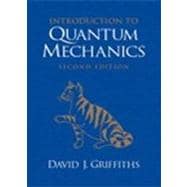
| Theory | |
| The Wave Function | |
| The Time-Independent Schrodinger Equation | |
| Formalism | |
| Quantum Mechanics in Three Dimensions | |
| Identical Particles | |
| Applications | |
| Time-Independent Perturbation Theory | |
| The Variational Principles | |
| The WKB Approximation | |
| Time-Dependent Perturbation Theory | |
| The Adiabatic Approximation | |
| Scattering | |
| Afterword | |
| Index | |
| Table of Contents provided by Publisher. All Rights Reserved. |
The New copy of this book will include any supplemental materials advertised. Please check the title of the book to determine if it should include any access cards, study guides, lab manuals, CDs, etc.
The Used, Rental and eBook copies of this book are not guaranteed to include any supplemental materials. Typically, only the book itself is included. This is true even if the title states it includes any access cards, study guides, lab manuals, CDs, etc.